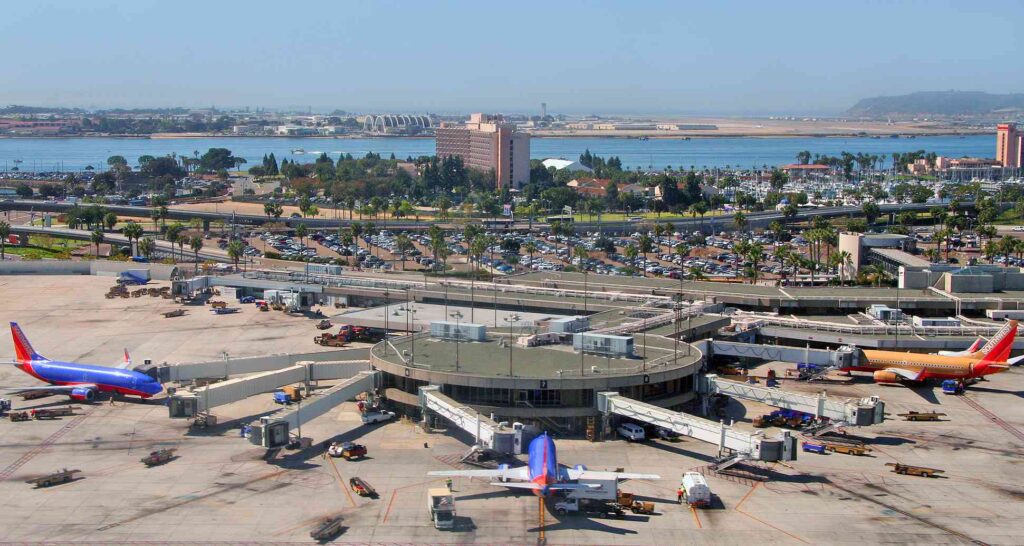
A potential collision scenario was avoided at San Diego International Airport when the facility’s automated surface surveillance system raised an alert regarding the proximity of two aircraft. (Photo: SanDiego.org)
A go-around incident involving a Cessna Citation business jet and a Southwest Airlines Boeing 737 has prompted an official investigation by the Federal Aviation Administration (FAA). The event, which unfolded shortly before noon local time on August 11 at San Diego International Airport, has raised questions about air traffic coordination and safety protocols.
According to the FAA’s initial statement, an air traffic controller had given the pilot of the Cessna Citation business jet clearance to land on Runway 27. The same controller directed Southwest Flight 2493, operated by a Boeing 737, to taxi onto the same runway, instructing them to await further departure commands.
A potential collision scenario was averted when the facility’s automated surface surveillance system raised an alert regarding the proximity of the two aircraft. Recognizing the imminent conflict, the air traffic controller instructed the pilot of the Cessna Citation to discontinue its landing approach and execute a go-around, ensuring the safety of both aircraft and their occupants.
The FAA responded by dispatching a team of experts to the airport to undertake a comprehensive investigation into the series of events leading up to the go-around. One significant aspect of this review will be to determine the closest proximity between the two involved aircraft.
On Saturday, Southwest said that it is participating in the review of the incident conducted by the FAA. “Our aircraft departed without event and the flight operated normally, with a safe landing in San Jose as scheduled,” said Chris Mainz, a spokesperson for the airline, in a statement.

(Photo: Saab)
While no injuries or damages were reported, incidents of this nature underscore the importance of seamless coordination in the dense air traffic environment surrounding busy airports. Automated systems like the surface surveillance system play a crucial role in enhancing situational awareness for air traffic controllers, and this incident serves as a reminder of the dual role of technology and human vigilance in maintaining the safety and efficiency of our skies.
The San Diego International Airport has Airport Surface Detection Equipment, Model X (ASDE-X) installed, as do at least 34 other airports in the U.S. The ASDE-X system uses radar, multilateration, and satellite technology to notify air traffic controllers of potential runway conflicts.
The company Saab offers air traffic control products such as cooperative surveillance sensors (multilateration and ADS-B), surface movement radars, and decision support tools for air traffic controllers.
“Situations develop quickly on an airfield,” according to Rick Smith, Saab Director of FAA Programs. “A combined audio and video alert is used to notify air traffic controllers before an incident can occur so that they can quickly prevent it. Air traffic controllers must trust our data is correct to give accurate and effective control measures and keep aircraft and people safe.”
According to the FAA, ASDE-X uses data from the following sources:
- Surface surveillance radar located on top of the air traffic control tower and/or surface surveillance radar located on a remote tower
- Multilateration sensors located around the airport
- Airport Surveillance Radars such as the ASR-9
- Automatic Dependent Surveillance — Broadcast (ADS-B) sensors
- Terminal automation system to obtain flight plan data.

(Photo: FAA)